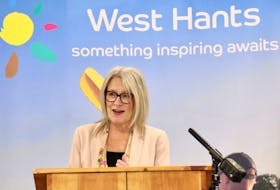Kings County council has given its unanimous endorsement for i-Valley to proceed with an application to the federal Connect to Innovate program on behalf of the municipality.
The $500 million program from Innovation, Science and Economic Development Canada will provide up to 75 per cent of the capital funding to eligible communities to provide new and upgraded backbone and last-mile Internet networks to rural and remote communities.
As explained by i-Valley co-founder Barry Gander at the April 4 Kings County council session, the backbone brings fibre optic cable into a community while the last mile distributes Internet service to businesses and residents.
From a population point of view, the network could provide service to most residents in Kings who are currently without service or who are underserviced.
Gander said they would be buying capacity from the Valley Community Fibre Network (VCFN) to create an open network that any Internet service provider could use to compete for customer service.
“We’re building a freeway that anyone can drive on,” Gander said.
Public buildings or “anchor institutions” would be used to place antennas or “break-out points” for the backbone network. Fibre optic cable would be run to the centre of 10 km “circles” and the service would be distributed by point to multipoint antennas to homes and businesses.
Gander said it would probably take about a year to build the network. Fibre optic cable would be strung along existing power poles or buried in some locations.
Gander said the network would be owned by the County of Kings and could be managed by an outside party. Mayor Peter Muttart said that if the VCFN makes a profit, it spills over to the municipality since Kings County owns 16 per cent of the VCFN.
Muttart said there’s also an opportunity for the municipality to bring in revenue by hiring someone to manage the network and be an Internet service provider. Coun. Pauline Raven said it would be interesting to know the potential for revenue.
Gander said the municipality would have to come up with the remaining 25 per cent of the funding for the $6,220,000 project. However, no financial commitment has been made at this point, as the municipality could still say no even if the application for federal funding is successful. Successful applications will be announced this summer.
Gander estimates that the cost per month to customers would be approximately $57. He said the speed customers realize would depend on how heavy the use is at any given time. The network would be built to a 5 megabit per second standard but Gander said he expects that most households would probably get 10 megabits per second or more. Customers would be able to download movies and songs, for example.
I-Valley is a not-for-profit movement to create “smart regions and communities” in the Annapolis Valley and elsewhere in Nova Scotia. “Smart communities” mobilize citizens to achieve faster economic growth, better health care and greater sustainability through the use of advanced enabling technologies.
By the numbers
$3.5 million – The cost to run open access fibre optic extensions off the VCFN to establish Points of Presence (PoP’s).
$1.3 million – The cost of broadcast towers for eligible communities.
$660,000 – The cost of LTE tower sites.
$600,000 – The cost of VCFN repeater sites.
$12,000 – The estimated cost per kilometre for running fibre optic cable.









